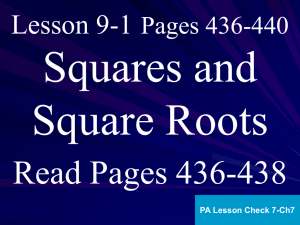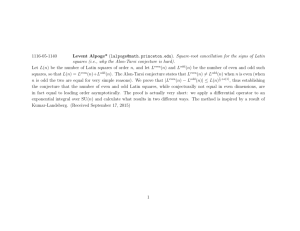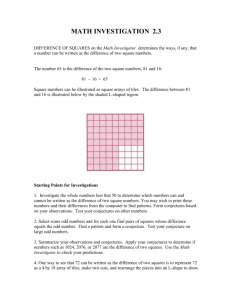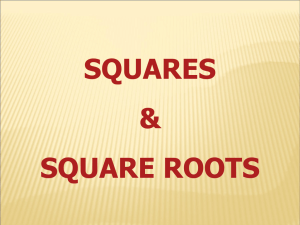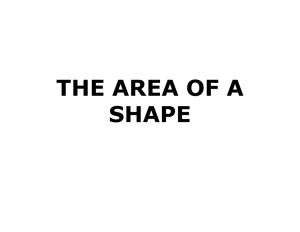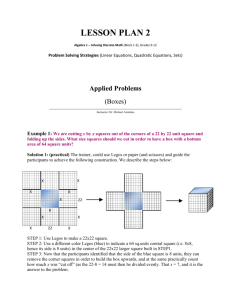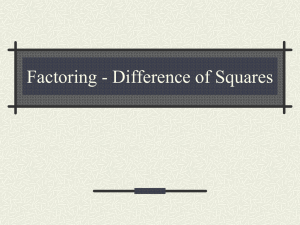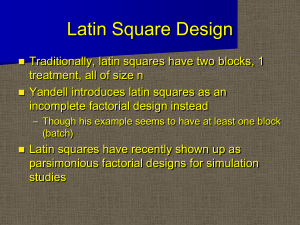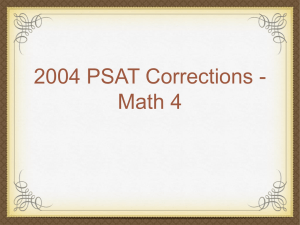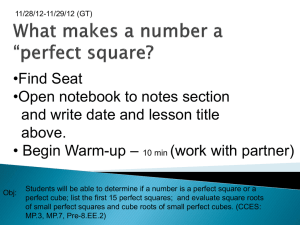Latin-Graeco Squares
advertisement
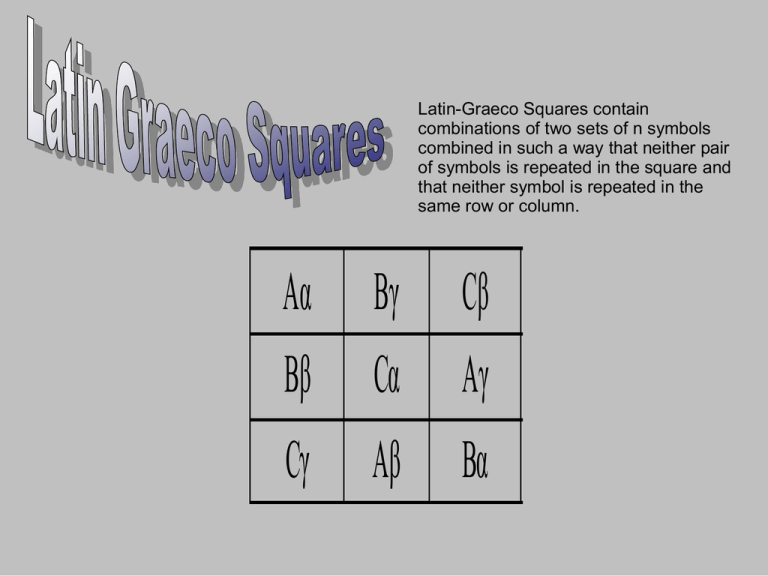
Latin-Graeco Squares contain combinations of two sets of n symbols combined in such a way that neither pair of symbols is repeated in the square and that neither symbol is repeated in the same row or column. Aα Bγ Cβ Bβ Cα Aγ Cγ Aβ Bα In a 1782 paper Euler considers the 36 officers problem. This problem states that there are 6 different ranks and 6 different regiments. The problem then poses the question whether the officers can be arranged in a 6×6 grid with no two officers from the same regiment or of the same rank in the same row or column. Euler denoted the regiments of the officers with a Latin letter and the rank with a Greek letter and began by arranging the officers in regiment to create a Latin square. The characteristics of the officer would be made up by a combination of the two letters creating a Latin-Graeco square. However the creation of an order 6 Latin-Graeco square proved to be impossible… This lead Euler to suggest that Latin-Graeco squares did not exist for squares of the order n where: n = 4k + 2 Therefore Latin-Graeco squares could not be created of the order n = 2,6,10,… This conjecture had however not been proved leading to many attempts to prove the conjecture true or false. It was known that squares to the order 2 and 6 could not be constructed and therefore assumed by many that the theory was correct. However in 1959 Bose, Shrikhande and Parker found a square of order 10 and several other counter examples of higher numbers which fitted the pattern of n = 4k +2. Therefore proving Euler’s conjecture wrong. It has since been found that all orders greater than 10 can form a Graeco-Latin square. Therefore showing that squares can be formed for all orders n ≥ 3 (n ≠ 6) Latin-Graeco squares are constructed by combining two orthogonal Latin squares. Orthogonal implies that the values in the squares are perpendicular with only one square of each colour being in the same place. This can be seen best in the creation of a square of the order 3: The main use of Graeco-Latin squares is in the design of experiments where there are four variables to take into consideration. As there are three ways of combining variables. The variables can be combined by the columns, rows and the combination of the two letters. In testing the economy of cars there can be four factors which account for the rate of fuel consumption: Fuel Type Car Weather Tyre Type These four factors can be tested in an experiment using a Graeco-Latin square to design the series of tests. In this grid Columns = Different Cars Rows = Different Weather Latin Letters = Different Tyres Greek Letters = Different Octane Levels of Petrol By carrying out the series of tests in the order outlined in the table each of the four factors can be tested against each of the other factors without repetition. Car 1 Car 2 Car 3 Day 1 Aα Bγ Cβ Day 2 Bβ Cα Aγ Day 3 Cγ Aβ Bα By increasing the order of the square the number of samples which are being tested can be increased for example: A square of order four can be used to test four samples A square of order five can be used to test five samples

